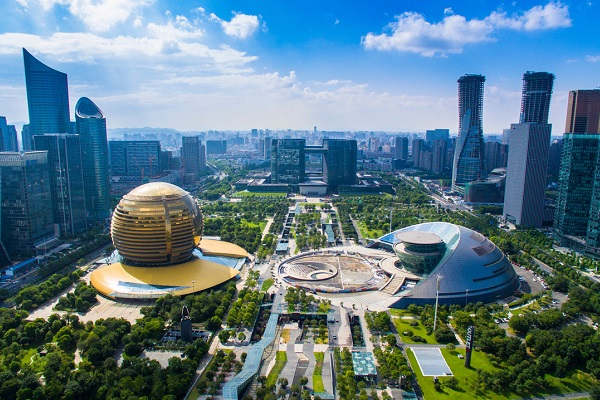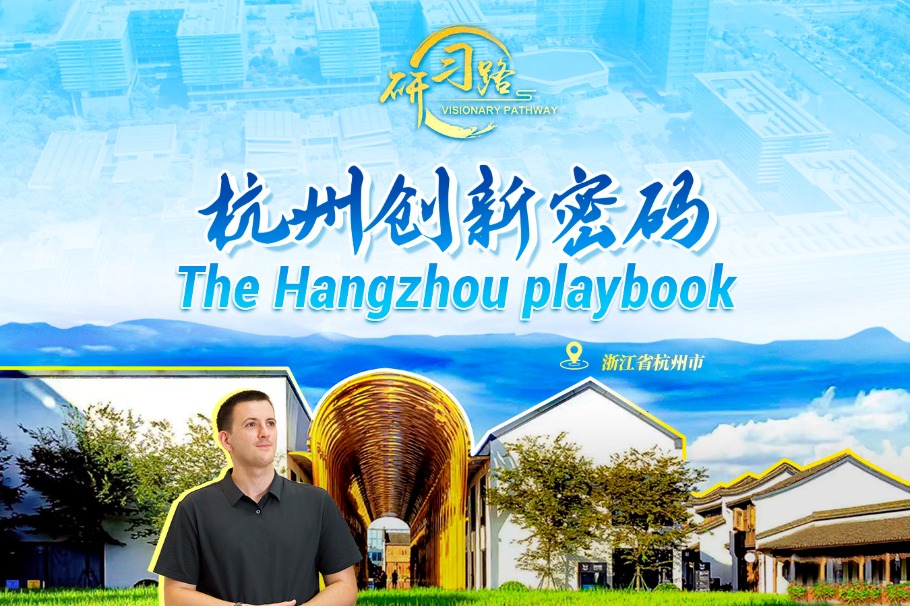Belt, Road a boon for global cooperation
In wake of pandemic slowdowns, decade-old initiative plays major role in China's partnerships with other nations, regions
After setting up a delivery services venture between China and Southeast Asia in 2019, Best Inc of Hangzhou, Zhejiang province, said it had handled only a limited number of online orders placed by Southeast Asian consumers through Chinese e-commerce platforms.
Best had hoped to expand its presence in Belt and Road Initiative-related markets. But at the time, they were new to the market and not yet widely known.
Things, however, have changed significantly. The company, which has continued to add to its infrastructure in the region, said it has experienced significant growth in recent years.
Driven by the increasing demand, Best now ships dozens of standard twenty-foot equivalent units of containers from Chinese ports to Southeast Asian countries each month. The company said its business in that category witnessed a 45 percent year-on-year surge in the first quarter of 2023.
"The tangible expansion of the BRI and its various forms of cooperation have greatly contributed to the remarkable growth of Best's sales. Among the notable impacts, our warehouses in Malaysia have experienced a significant upsurge in transportation services for large and heavy cross-border goods from China in recent months," said Zhu Jiashu, deputy general manager of Best Global, the group's international arm.
Best to date has established service branches in countries and regions such as Japan, Australia and Southeast Asia, and built a logistics network in five countries, including Vietnam and Thailand in the Asia-Pacific region.
To facilitate inclusive development through cooperative projects around the world, China proposed the Silk Road Economic Belt and the 21st Century Maritime Silk Road in 2013. Known collectively as the BRI, the initiative has grown into one of the most promising platforms for international cooperation, forging a new pathway toward inclusive globalization that delivers shared benefits, officials said.
Market watchers said a series of big-ticket projects like high-speed railway projects in Indonesia, port expansion in Djibouti and a nuclear power facility in the United Kingdom are all shining examples of achievements under the initiative.
Apart from developing game-changing infrastructure projects such as railroads, hospitals, power plants, as well as bulk and container ports in countries in need, the BRI has created growth in areas such as trade in services, new foreign trade formats and digital and green development internationally, said Gao Lingyun, director of the international investment division at the Institute of World Economics and Politics, which is part of the Chinese Academy of Social Sciences.
With steady progress in advancing high-quality Belt and Road cooperation, the initiative is expected to continue to make emerging economies stronger and shorten the growth gap between landlocked and coastal areas in many parts of the world, Gao said.
State-owned Power Construction Corp of China, or PowerChina, announced in early May that it had signed an engineering, procurement and construction contract to build the Kahama photovoltaic power project, the first of its kind in Tanzania. Such contracts are common in the construction industry, officials said.
Designed with a total installed capacity of 10.33 megawatts, the project will include surveys and design, equipment purchases and construction and installation of the photovoltaic zone and a 3-kilometer power export line.
Once operational, the project will improve Tanzania's power source structure, promote the development of the country's clean energy strategy and boost its economic development, said Chen Guanfu, vice-president of PowerChina's overseas business unit.
The BRI has put the idea of globalization into practice, officials said. By connecting infrastructure, it helps to boost trade, attract investment and foster people-to-people exchanges, said Zhang Jianping, deputy director of the academic committee of the Beijing-based Chinese Academy of International Trade and Economic Cooperation under the Ministry of Commerce.
In terms of advancing international production capacity cooperation and modern infrastructure projects, Chinese companies have also been working with foreign partners such as Germany's Siemens AG, France's Schneider Electric SE and Switzerland's ABB Group to develop infrastructure in economies covered by the initiative, he said.
China Energy Engineering Corp Ltd, a Beijing-based State-owned enterprise, announced in March that it had started to build a large-scale wind power project in Uzbekistan.
The project is expected to generate jobs in the Central Asian country, as well as set an example of China-Saudi Arabia third-party market cooperation in jointly developing the BRI, said Xue Danfeng, deputy board chairman of Energy China's international group.
Financing for the wind farm project in Uzbekistan is being provided by ACWA Power, a Riyadh, Saudi Arabia-based developer and operator of power generation and water desalination facilities with a presence in 10 countries, largely in the Middle East, Africa and Southeast Asia.
The Bash and Dzhankeldy wind power project, located in Bukhara province, is expected to have the largest installed capacity of its kind in Central Asia. It includes the construction of two 500-megawatt wind power plants and associated power transmission lines.
Taking full advantage of substantial prevailing winds in the region, the project, once operational, is expected to provide more than 3.5 billion kilowatt-hours of power annually, representing a reduction of 1.6 million metric tons of carbon dioxide per year, Xue said.
It is expected to help millions of people in Uzbekistan by enhancing the local power supply, improving the local power structure and transforming the energy structure in the country, he said.
By mid-February, China had signed cooperation agreements with 151 countries and 32 international organizations under the BRI, and its annual trade value with BRI-related countries and regions almost doubled from 2013 to 2022, according to the Chinese Academy of International Trade and Economic Cooperation.
China's foreign trade has been boosted by closer business ties and complementary trade structures with many trading partners. The nation's trade with countries and regions participating in the BRI rose 16.8 percent year-on-year to 3.43 trillion yuan ($482 billion) in the first quarter. That growth rate was 12 percentage points higher than the overall growth rate of China's foreign trade during the same period, said the General Administration of Customs.
China's exports of intermediate goods to those economies reached 1.1 trillion yuan, up 18.2 percent on a yearly basis. Intermediate goods are often used to produce a finished product. Those exports accounted for 54 percent of the country's total exports to BRI-related markets during the same period.
Many BRI-related economies are entering a new era of environmentally conscious growth and industrial upgrading. That has contributed to Chinese exports of automotive components to those markets jumping 40.5 percent year-on-year between January and March. Exports of lithium batteries to those markets surged 50.3 percent and electrical control device exports rose 23.9 percent on a yearly basis, Customs officials said.
China has emerged as a crucial contributor of global public goods and a proactive responder to uncertainties and risks, said Wang Wen, executive dean of the Chongyang Institute for Financial Studies at Renmin University of China. That is, China has become a greater contributor to global prosperity, Wang said.
Such public goods provided by China now cover a broad spectrum, ranging from anti-epidemic products to frameworks that promote international cooperation such as the BRI, Wang said, stressing that the BRI also provides Chinese solutions for reforming the global governance system.
Humanwell Healthcare (Group) Co Ltd, a Wuhan, Hubei province-based pharmaceutical company, invested in a pharmaceutical factory it put into operation in Mali in 2015. As production has expanded at the plant in subsequent years, Mali has ended its dependence on imported drugs and significantly lowered market prices for such products, while driving the growth of related industries.
Ninety percent of the factory's employees are locals, and it exports drugs to eight neighboring countries, substantially alleviating the problem of medicine shortages in West Africa.
Joerg Wuttke, president of the European Union Chamber of Commerce in China, said China will continue to play an important role, given the size of the Chinese economy and its level of integration with the global economy.
China's nonfinancial outbound direct investment rose 26.6 percent year-on-year to 289.29 billion yuan in the first four months of 2023, while its nonfinancial ODI in countries and regions participating in the BRI came in at $7.53 billion, up 9 percent from the same period last year, according to the Ministry of Commerce.
-
Visionary Pathway - Hangzhou Playbook
July 15, 2025



